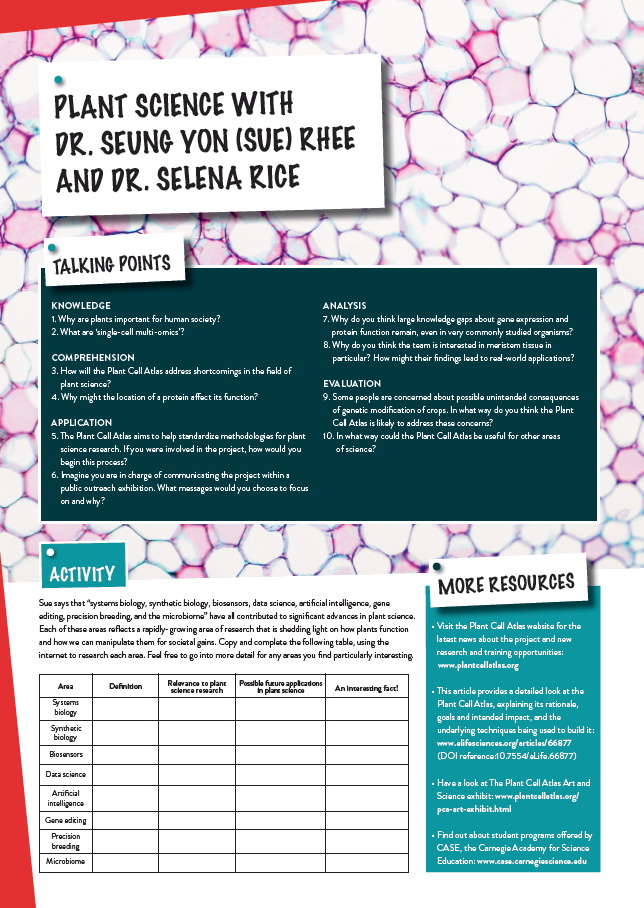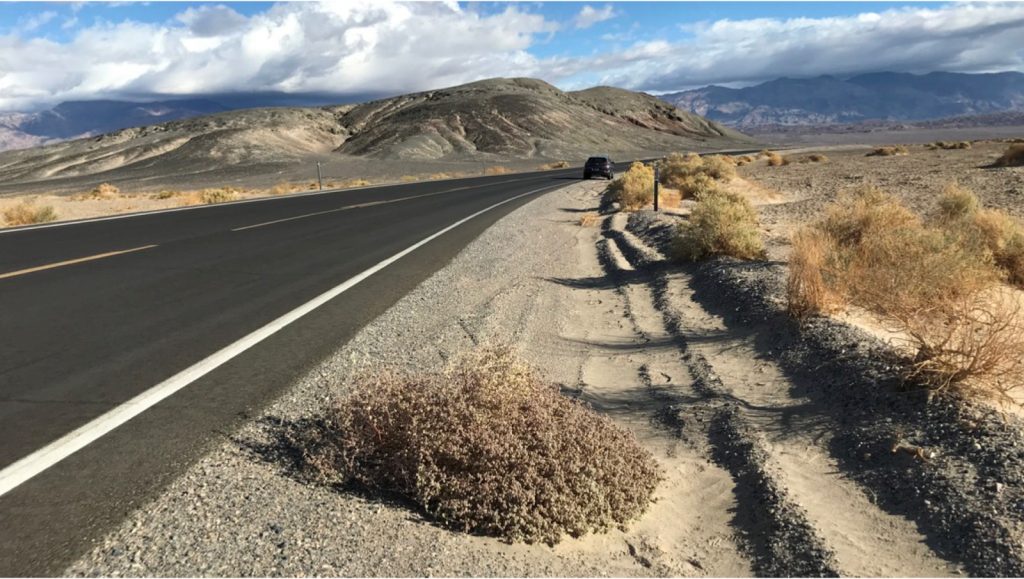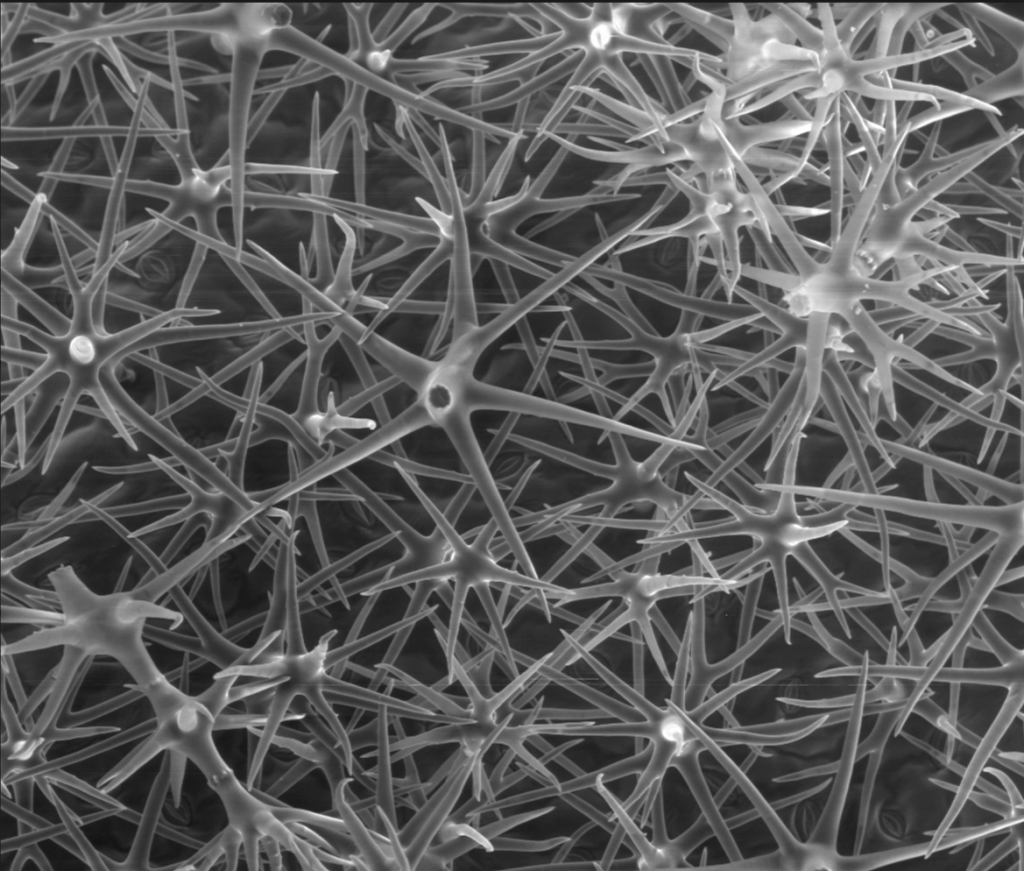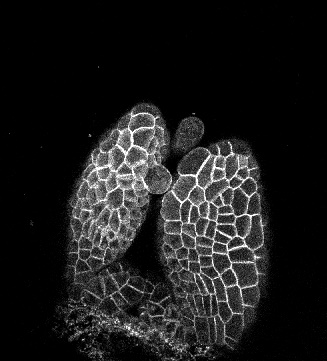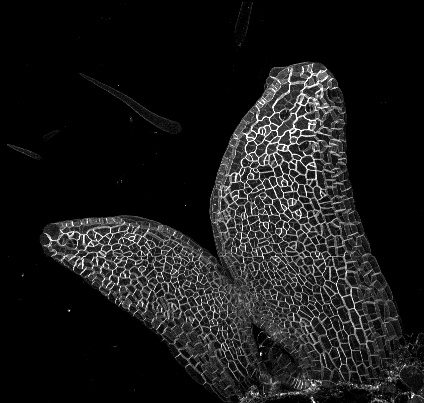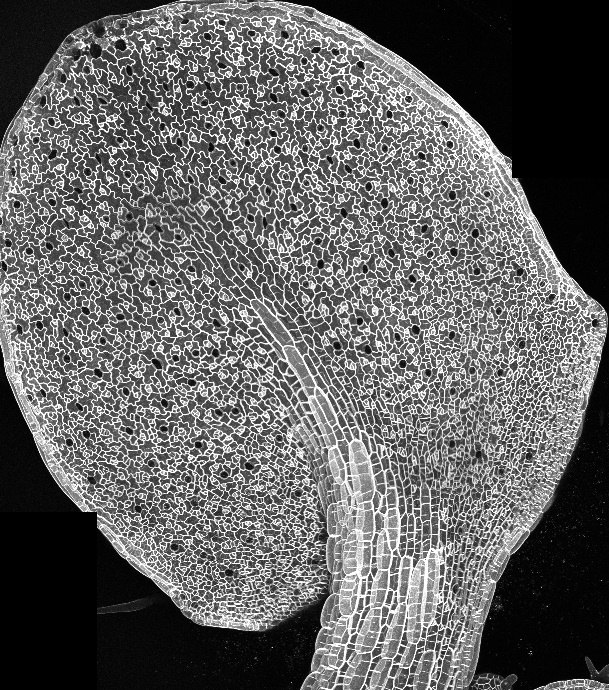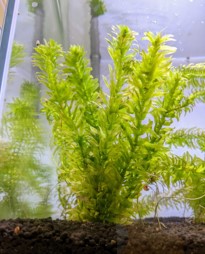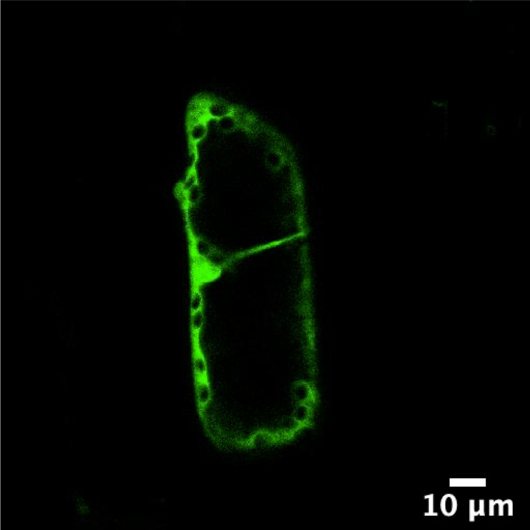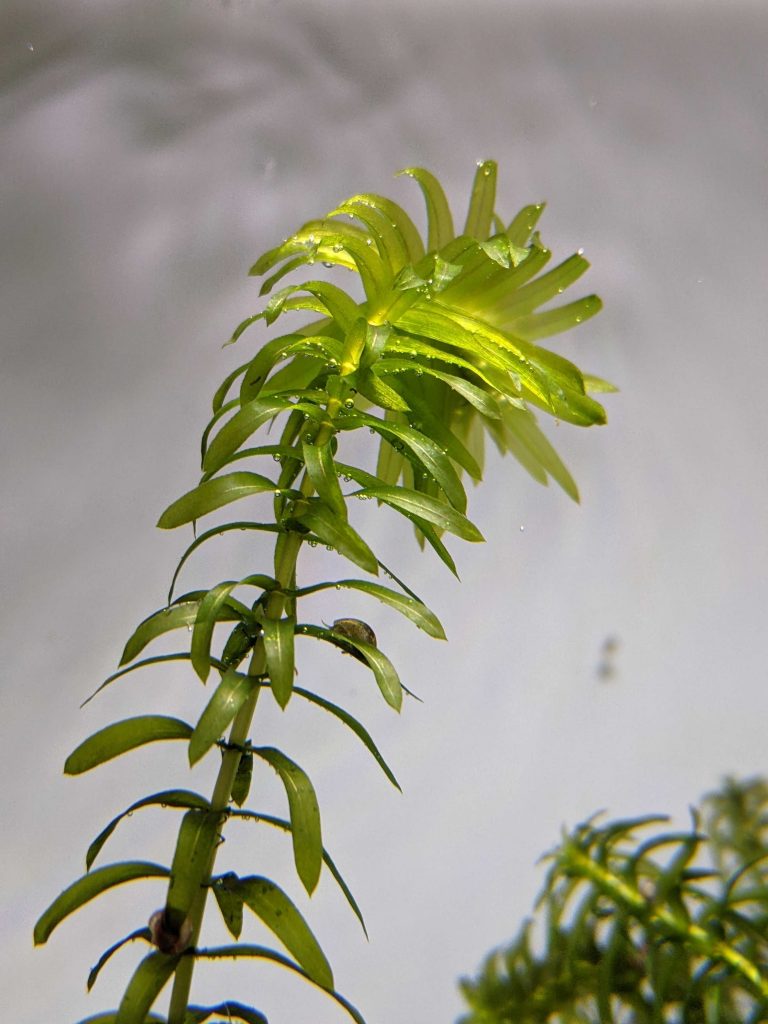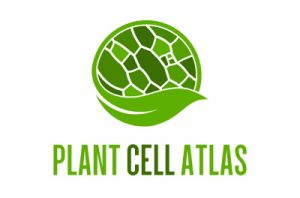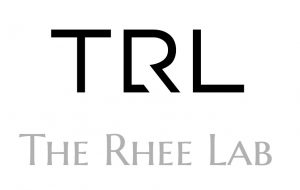Growing a community: building the Plant Cell Atlas
Plants are integral to society, but there are still big knowledge gaps about how they work at the molecular and cellular levels. To address this, Dr Seung Yon (Sue) Rhee and Dr Selena Rice from the Carnegie Institution for Science in Stanford, California, USA, are helping to build the Plant Cell Atlas, a comprehensive compilation of everything we know about plant cells and the molecules within
TALK LIKE A PLANT SCIENTIST
GENE EXPRESSION – the process by which the ‘instructions’ within genes are converted into the creation of proteins and RNA molecules
MERISTEM – a region of plant tissue consisting of actively dividing unspecialised cells to form new tissue
MODEL ORGANISM – an intensively-studied species used as a reference for drawing conclusions about the wider group of organisms to which it belongs
MOLECULAR PATHWAY – a series of interactions among molecules in a cell, which leads to a particular outcome
PROTEIN – complex, diverse molecules made up of amino acids, found within cells and which are the building blocks and molecular machineries for many cellular processes
SINGLE-CELL MULTI-OMICS – a catch-all term for powerful scientific techniques that measure multiple types of molecules within a cell simultaneously
Plants supply most of our food, underpin our ecosystems, supply many of our medicines, store vast amounts of carbon from photosynthesis, and are a powerful source of renewable energy. They are very important! However, despite major advances in our understanding of plants thanks to new technologies and collaborative efforts, there are still many unanswered questions about how exactly they grow, respond to environmental cues, and reproduce at the molecular and cellular levels. Answering these unknowns is essential to ensuring that we can address some of the biggest challenges that society faces, such as food and energy insecurity, climate change, and environmental degradation.
“A comprehensive understanding of plant cell structure and function at a molecular level is essential to understanding how plants fulfil the services we rely on,” says Dr Sue Rhee. She and Dr Selena Rice work at the Carnegie Institution for Science in Stanford, California, and have helped bring together over 800 experts to create the Plant Cell Atlas – a community resource that will describe everything we know about plant cell types, the molecules they contain, and how these molecules and cells interact.
WHY WE NEED THE ATLAS
These days, scientists tend to be specialists. This means that research teams tend to focus on discovering more about specific, often quite niche, topics. While this is fantastic for building depth of knowledge, there is a danger of developing isolated ‘pockets’ of understanding without any wider appreciation for how they fit together.
The Plant Cell Atlas hopes to fix this for plant science, by drawing these ‘pockets’ together into one place and developing methods for integrating them so that scientists can make connections between different areas and get a better grasp of the bigger picture. “We need both new data and better frameworks to answer unanswered questions about plant science and link these data types together,” says Sue. “This need is becoming increasingly pressing, as disasters associated with rapid climate change and other factors will increase societal demand for plant-based solutions from scientists, breeders, growers, engineers, and entrepreneurs.”
The Atlas will work to develop universal techniques and standardise methods, to ensure that different datasets can be integrated and compared. Networking and training opportunities will help strengthen collaboration, not only on scientific research itself but also exploring funding opportunities and developing useful shared tools and methods. “The development of innovative tools is enabling us to make unprecedented discoveries within plant science,” says Sue. “These tools and approaches cover systems biology, synthetic biology, biosensors, data science, artificial intelligence, gene editing, precision breeding, the microbiome, and more.”
BUILDING THE ATLAS
“There’s still a lot we don’t know about plants,” says Selena. “Even for the most-studied plant in the world, model organism Arabidopsis thaliana, we don’t know and can’t even predict the molecular function of around 20% of its genes.
This percentage is much higher for other plants, including important crops such as soybean and rice.” At a larger scale, there is still a lot we do not know about plant cell types, especially when comparing different species that might not be structured in the same way.
Addressing these unknowns will require a wide array of scientific techniques, which can be broadly categorised as ‘single-cell multi-omics’. This term refers to any technology that measures multiple types of molecules within a cell. In addition to helping to define the overall function of the cell and differences between cell types within an organism, this also sheds light on molecular pathways that give the cell its identity and role. “Single-cell multi-omics technologies will be necessary to get a deeper understanding of plant cell processes across all layers of molecular regulation,” says Selena. The ‘omics’ suffix refers to any technique that results in rich, large-scale datasets, including proteomics, transcriptomics, and metabolomics.
QUESTIONS TO ADDRESS
To ensure the Atlas develops in a useful direction, the team has identified specific areas to focus on. The first of these is post-embryonic development – understanding the mechanisms that make a plant develop from a simple seed to an adult organism. Unlike animals, where most development happens during embryo formation, plants do most of their development after the seed geminates. “We want to characterise the functions of every cell within a plant embryo, to help decipher the ‘rules’ underlying the earliest stages of plant tissue formation,” says Selena.
The team is especially interested in the meristem, which is relevant for every stage of a plant’s life. These regions of unspecialised cells are found in areas such as the tips of roots and shoots. “Plant meristems are remarkable multicellular machines,” says Sue. “They are continually producing new cells that must be given a ‘fate’ and then guided through phases of maturation.” Meristems are one of the ways that animals and plants differ. While animals typically develop according to a set ‘blueprint’ – for humans, this means two arms, two legs, a head at one end containing eyes and ears, and so on – plants are more flexible. Plants develop more modularly, as the meristems will react to their surroundings to stimulate the development of a branch, a leaf, or a root, to name a few. Uncovering how meristems coordinate this development at the molecular level is a key research question.
This also relates to crucial questions about how plants respond to the environment. Reactions to pathogens is a key area of interest because disease outbreaks can be catastrophic for crops. “There are questions about how the signals that plant cells emit when attacked are communicated to neighbouring cells and propagated to remote regions of a plant,” says Sue. “Is there a simple ‘switch’ system, or is there something more complex going on?” Understanding these systems could help scientists develop more disease-resistant crop varieties, potentially ensuring better food security for millions of people.
THE IMPORTANCE OF LOCATION
The team believes that the location of proteins is a relatively untapped source of information about their role within plant cells. In recent decades, scientists have unlocked the relationship between the molecular structure and function of proteins; now, it is believed that location is the next knowledge goldmine. “The location of a protein can dramatically affect its function,” says Sue. “For instance, the differing environments of a cell nucleus, cytoplasm, or cell membrane may stimulate a protein to behave differently.”
Deciphering this relationship could help introduce advances in genetic technology, given that proteins are created by the expression of genes. “There is evidence that the location and timing of gene expression in rice impacts grain size and yield,” says Sue. “Other studies have found relationships between the location of gene expression and the sequestration of extra carbon within plants’ roots.” These findings have clear benefits for crop production and carbon sequestration, which are essential for dealing with a changing climate. “Currently, these sorts of location-to-function datasets are incomplete and have no central repository,” says Sue. “This limits the rapid development of improved crops.” The Atlas aims to directly address this issue.
BUILDING A COMMUNITY
“The Plant Cell Atlas community consists of over 800 scientists and stakeholders, who attend our events and contribute to discourse,” says Selena. “We have a core group of 60 scientists who guide the development of the Atlas, drawing on their diverse range of expertise.” The community has benefited from the connectivity granted by social media platforms and from existing academic relationships that have allowed the message to spread. The COVID-19 pandemic has seen the rapid development of digital communication potential, which has meant that the Atlas team has been able to attract more scientists to participate.
Recently, the Plant Cell Atlas received a Research Coordination Network grant from the US National Science Foundation, which has allowed the community to host workshops and a landmark symposium, as well as expand outreach efforts for early-career researchers and the public. “Our next steps involve hosting more virtual scientific workshops, a new Gordon Research Conference on single-cell approaches in plant biology, and career panels, and expanding our Art and Science exhibit to feature artists and scientists from historically excluded groups,” says Selena.
 SEUNG YON (SUE) RHEE
SEUNG YON (SUE) RHEE
Senior Staff Scientist
SELENA RICE
Scientific Coordinator and Biocurator
Carnegie Institution for Science, Stanford, California, USA
FIELD OF RESEARCH: Plant Science
RESEARCH PROJECT: Building the Plant Cell Atlas, a comprehensive repository of knowledge and data on plant cells, molecules, and pathways
FUNDERS: National Science Foundation (NSF), Carnegie Institution for Science
EXPLORE A CAREER IN PLANT SCIENCE
• Careers in plant science are diverse. In addition to academia, plant scientists are sought by agricultural organisations, the food industry, pharmaceutical developers, government labs, and environmental management institutions.
• Check the National Science Foundation’s Research Experience for Undergraduates (REU) page for internship opportunities.
• Selena recommends the American Society of Plant Biologists and the Botanical Society of America as useful organisations for building networks, investigating areas of interest, and accessing work experience and internship opportunities. They require membership fees but have discounts for students.
• The Plant Cell Atlas website has lots of useful information and anyone can join its community by requesting to be included in its email list.
At school, biology, chemistry, and mathematics will help lay the groundwork for a career in plant science.
Selena explains that she has never taken a formal course in plant science, and there are many related routes into the field. Sue lists several relevant university subjects, including plant biology, cell biology, ecology, evolutionary biology, bioengineering, biochemistry, genetics, computer science, statistics, applied mathematics, chemistry, and physics.
Selena highlights the growing role of bioinformatics and data science as datasets expand, meaning that skills in managing data are becoming increasingly desirable.
Reference
https://doi.org/10.33424/FUTURUM256
Tidestromia oblongifolia (Arizona Honeysweet) is a heat tolerant plant native to Death Valley. The team wants to understand how this plant thrives under the summer heat of Death Valley and translate the thermotolerance traits into crops to allow them to be resilient against climate change. (From top to bottom) T. oblongifolia growing in its natural environment, flowers, leaf hairs, and young plants in a growth chamber with an instrument measuring photosynthetic performance. (Photo credit: Dr. Karine Prado)
(From top to bottom) Confocal microscopic images of the first pair of true leaves from Arabidopsis thaliana seedlings expressing a fluorescently tagged plasma membrane protein. Seedlings were grown for 4, 6, and 8 days in soil. (Photo credit: Dr. Flavia Bossi)
An aquatic grass Egeria densa (top). Heterologous expression of sorghum chalcone synthase in Egeria densa exhibits localization in cytosol (left). (Photo credit: Dr. Purva Karia)
Rosette leaves of Arabidopsis thaliana 34-day-old plants grown in soil. (Photo credit: Dr. Flavia Bossi)
The bubbles forming on Egeria densa leaves are oxygen bubbles as a result of such robust photosynthesis that the tank becomes saturated with oxygen. This oxygen cannot dissolve in the water, so forms bubbles on the leaf surface and, eventually, rises up to the surface of the water. This is called ‘pearling’. (Photo Credit: Daniel Ginzburg)
GENE EXPRESSION – the process by which the ‘instructions’ within genes are converted into the creation of proteins and RNA molecules
MERISTEM – a region of plant tissue consisting of actively dividing unspecialised cells to form new tissue
MODEL ORGANISM – an intensively-studied species used as a reference for drawing conclusions about the wider group of organisms to which it belongs
MOLECULAR PATHWAY – a series of interactions among molecules in a cell, which leads to a particular outcome
PROTEIN – complex, diverse molecules made up of amino acids, found within cells and which are the building blocks and molecular machineries for many cellular processes
SINGLE-CELL MULTI-OMICS – a catch-all term for powerful scientific techniques that measure multiple types of molecules within a cell simultaneously
Plants supply most of our food, underpin our ecosystems, supply many of our medicines, store vast amounts of carbon from photosynthesis, and are a powerful source of renewable energy. They are very important! However, despite major advances in our understanding of plants thanks to new technologies and collaborative efforts, there are still many unanswered questions about how exactly they grow, respond to environmental cues, and reproduce at the molecular and cellular levels. Answering these unknowns is essential to ensuring that we can address some of the biggest challenges that society faces, such as food and energy insecurity, climate change, and environmental degradation.
“A comprehensive understanding of plant cell structure and function at a molecular level is essential to understanding how plants fulfil the services we rely on,” says Dr Sue Rhee. She and Dr Selena Rice work at the Carnegie Institution for Science in Stanford, California, and have helped bring together over 800 experts to create the Plant Cell Atlas – a community resource that will describe everything we know about plant cell types, the molecules they contain, and how these molecules and cells interact.
WHY WE NEED THE ATLAS
These days, scientists tend to be specialists. This means that research teams tend to focus on discovering more about specific, often quite niche, topics. While this is fantastic for building depth of knowledge, there is a danger of developing isolated ‘pockets’ of understanding without any wider appreciation for how they fit together.
The Plant Cell Atlas hopes to fix this for plant science, by drawing these ‘pockets’ together into one place and developing methods for integrating them so that scientists can make connections between different areas and get a better grasp of the bigger picture. “We need both new data and better frameworks to answer unanswered questions about plant science and link these data types together,” says Sue. “This need is becoming increasingly pressing, as disasters associated with rapid climate change and other factors will increase societal demand for plant-based solutions from scientists, breeders, growers, engineers, and entrepreneurs.”
The Atlas will work to develop universal techniques and standardise methods, to ensure that different datasets can be integrated and compared. Networking and training opportunities will help strengthen collaboration, not only on scientific research itself but also exploring funding opportunities and developing useful shared tools and methods. “The development of innovative tools is enabling us to make unprecedented discoveries within plant science,” says Sue. “These tools and approaches cover systems biology, synthetic biology, biosensors, data science, artificial intelligence, gene editing, precision breeding, the microbiome, and more.”
BUILDING THE ATLAS
“There’s still a lot we don’t know about plants,” says Selena. “Even for the most-studied plant in the world, model organism Arabidopsis thaliana, we don’t know and can’t even predict the molecular function of around 20% of its genes.
This percentage is much higher for other plants, including important crops such as soybean and rice.” At a larger scale, there is still a lot we do not know about plant cell types, especially when comparing different species that might not be structured in the same way.
Addressing these unknowns will require a wide array of scientific techniques, which can be broadly categorised as ‘single-cell multi-omics’. This term refers to any technology that measures multiple types of molecules within a cell. In addition to helping to define the overall function of the cell and differences between cell types within an organism, this also sheds light on molecular pathways that give the cell its identity and role. “Single-cell multi-omics technologies will be necessary to get a deeper understanding of plant cell processes across all layers of molecular regulation,” says Selena. The ‘omics’ suffix refers to any technique that results in rich, large-scale datasets, including proteomics, transcriptomics, and metabolomics.
QUESTIONS TO ADDRESS
To ensure the Atlas develops in a useful direction, the team has identified specific areas to focus on. The first of these is post-embryonic development – understanding the mechanisms that make a plant develop from a simple seed to an adult organism. Unlike animals, where most development happens during embryo formation, plants do most of their development after the seed geminates. “We want to characterise the functions of every cell within a plant embryo, to help decipher the ‘rules’ underlying the earliest stages of plant tissue formation,” says Selena.
The team is especially interested in the meristem, which is relevant for every stage of a plant’s life. These regions of unspecialised cells are found in areas such as the tips of roots and shoots. “Plant meristems are remarkable multicellular machines,” says Sue. “They are continually producing new cells that must be given a ‘fate’ and then guided through phases of maturation.” Meristems are one of the ways that animals and plants differ. While animals typically develop according to a set ‘blueprint’ – for humans, this means two arms, two legs, a head at one end containing eyes and ears, and so on – plants are more flexible. Plants develop more modularly, as the meristems will react to their surroundings to stimulate the development of a branch, a leaf, or a root, to name a few. Uncovering how meristems coordinate this development at the molecular level is a key research question.
This also relates to crucial questions about how plants respond to the environment. Reactions to pathogens is a key area of interest because disease outbreaks can be catastrophic for crops. “There are questions about how the signals that plant cells emit when attacked are communicated to neighbouring cells and propagated to remote regions of a plant,” says Sue. “Is there a simple ‘switch’ system, or is there something more complex going on?” Understanding these systems could help scientists develop more disease-resistant crop varieties, potentially ensuring better food security for millions of people.
THE IMPORTANCE OF LOCATION
The team believes that the location of proteins is a relatively untapped source of information about their role within plant cells. In recent decades, scientists have unlocked the relationship between the molecular structure and function of proteins; now, it is believed that location is the next knowledge goldmine. “The location of a protein can dramatically affect its function,” says Sue. “For instance, the differing environments of a cell nucleus, cytoplasm, or cell membrane may stimulate a protein to behave differently.”
Deciphering this relationship could help introduce advances in genetic technology, given that proteins are created by the expression of genes. “There is evidence that the location and timing of gene expression in rice impacts grain size and yield,” says Sue. “Other studies have found relationships between the location of gene expression and the sequestration of extra carbon within plants’ roots.” These findings have clear benefits for crop production and carbon sequestration, which are essential for dealing with a changing climate. “Currently, these sorts of location-to-function datasets are incomplete and have no central repository,” says Sue. “This limits the rapid development of improved crops.” The Atlas aims to directly address this issue.
BUILDING A COMMUNITY
“The Plant Cell Atlas community consists of over 800 scientists and stakeholders, who attend our events and contribute to discourse,” says Selena. “We have a core group of 60 scientists who guide the development of the Atlas, drawing on their diverse range of expertise.” The community has benefited from the connectivity granted by social media platforms and from existing academic relationships that have allowed the message to spread. The COVID-19 pandemic has seen the rapid development of digital communication potential, which has meant that the Atlas team has been able to attract more scientists to participate.
Recently, the Plant Cell Atlas received a Research Coordination Network grant from the US National Science Foundation, which has allowed the community to host workshops and a landmark symposium, as well as expand outreach efforts for early-career researchers and the public. “Our next steps involve hosting more virtual scientific workshops, a new Gordon Research Conference on single-cell approaches in plant biology, and career panels, and expanding our Art and Science exhibit to feature artists and scientists from historically excluded groups,” says Selena.
 SEUNG YON (SUE) RHEE
SEUNG YON (SUE) RHEE
Senior Staff Scientist
SELENA RICE
Scientific Coordinator and Biocurator
Carnegie Institution for Science, Stanford, California, USA
FIELD OF RESEARCH: Plant Science
RESEARCH PROJECT: Building the Plant Cell Atlas, a comprehensive repository of knowledge and data on plant cells, molecules, and pathways
FUNDERS: National Science Foundation (NSF), Carnegie Institution for Science
EXPLORE A CAREER IN PLANT SCIENCE
• Careers in plant science are diverse. In addition to academia, plant scientists are sought by agricultural organisations, the food industry, pharmaceutical developers, government labs, and environmental management institutions.
• Check the National Science Foundation’s Research Experience for Undergraduates (REU) page for internship opportunities.
• Selena recommends the American Society of Plant Biologists and the Botanical Society of America as useful organisations for building networks, investigating areas of interest, and accessing work experience and internship opportunities. They require membership fees but have discounts for students.
• The Plant Cell Atlas website has lots of useful information and anyone can join its community by requesting to be included in its email list.
At school, biology, chemistry, and mathematics will help lay the groundwork for a career in plant science.
Selena explains that she has never taken a formal course in plant science, and there are many related routes into the field. Sue lists several relevant university subjects, including plant biology, cell biology, ecology, evolutionary biology, bioengineering, biochemistry, genetics, computer science, statistics, applied mathematics, chemistry, and physics.
Selena highlights the growing role of bioinformatics and data science as datasets expand, meaning that skills in managing data are becoming increasingly desirable.
MEET SUE
I got excited about science when my family moved to the US from South Korea, and I did experiments with fruit flies and dissected guinea pigs in a high school biology class. My interest was solidified when I attended a summer school on protein engineering at Columbia University during high school and through independent research in plant physiology and biochemistry in college.
I conceived the Plant Cell Atlas (PCA) initiative and formulated the early concepts with my colleagues Dr David Ehrhardt and Dr Ken Birnbaum, which became the seed for a global grassroots movement and community. I am currently the principal investigator of the National Science Foundation’s Research Collaboration Network grant to further develop and support this community. I serve on the Steering Committee of the PCA initiative, along with five amazing colleagues, Dr Marisa Otegui, Dr Julia Bailey-Serres, Dr David Ehrhardt, Dr Nicholas Provart and Dr Ken Birnbaum.
My career path has been driven by five major sources: curiosity, serendipity, annoyance, technology, and lab members. The PCA came about largely because of the sequencing revolution revealing all the genes harboured in plant genomes and my annoyance at the slow pace of figuring out what these genes do! I felt that a global initiative like the PCA could help accelerate gene function discovery and our efforts to understand how plants are made, how they work, and how we can engineer plants for improving the conditions of people and our planet.
Most of my working day is spent on meeting with people in my lab and collaborators outside of our lab, writing (papers, grants, recommendation letters, and emails) and reading (articles, proposals, manuscripts, and job applications). On occasion, I do some research by helping people in the lab with data curation and data analysis and, on rare occasions, experiments!
The best thing about being a plant scientist is the community; plant scientists are generally highly motivated, smart, nice people, and it’s a pleasure to be part of that community. The biggest challenge is the limited funding.
I am very proud that 150+ people have trained in my lab, so far. I am also proud of the papers we have published, and the databases and resources we have created to support the research community.
In the future, I would like to contribute to making a world where plant-based bioeconomy is reversing the climate crisis, where the sixth mass extinction is mitigated, and people and the planet are healthier and more resilient because of advances in fundamental plant science being linked directly to solving many societal problems.
Reach out to people – such as scientists, university faculty, journalists, CEOs of start-ups, etc. – to connect, learn, and discuss your goals and interests. I enjoy getting emails from students who are genuinely interested in exploring ideas.
MEET SELENA
As a youngster, I loved learning about science and nature, everything from volcanoes to stars, to plants and animals. I also spent a lot of time studying martial arts, gaining my black belt in kung fu while at high school. Ancient history and cultures also fascinate me, which led me to spend a semester in Egypt during college to study ancient Egyptian art and history.
Neither of my parents were scientists but both had a love for science, which they passed on to me. I was always surrounded by books and toys about science, so developed a love and curiosity of the natural world from a young age.
I work as the Scientific Coordinator for the Plant Cell Atlas, so I handle most of the behind-the-scenes work that goes into building a new community. I spend most of my days communicating with scientists and organising the project’s logistics. This can mean anything from developing formal documents, to coordinating our exhibits at partnering universities.
I’ve had what most would consider a non-traditional career path for academia. After earning my PhD in biology, I became a lab manager as I found that I enjoyed the administrative aspects of running a lab more fulfilling than undertaking the research itself. I found my current position when I was looking to spend less time in the lab and grow my administrative skills, while still being connected to science.
Plant science is a vast field, with so much to learn and so many applications. Plants play a central and vital role in our society, providing everything from food to materials to energy to healthcare. Keeping up with the quantity of relevant research is both fascinating and extremely challenging.
I was very proud to develop the Plant Cell Atlas Art and Science Exhibit. We received lots of great feedback and interest, and it’s wonderful to shine a light on these remarkable but often-overlooked scientists. I am excited to expand the exhibit to include other incredible scientists, showcasing their work to help inspire people to become scientists themselves.
Do you have a question for Sue or Selena?
Write it in the comments box below and Sue or Selena will get back to you. (Remember, researchers are very busy people, so you may have to wait a few days.)


